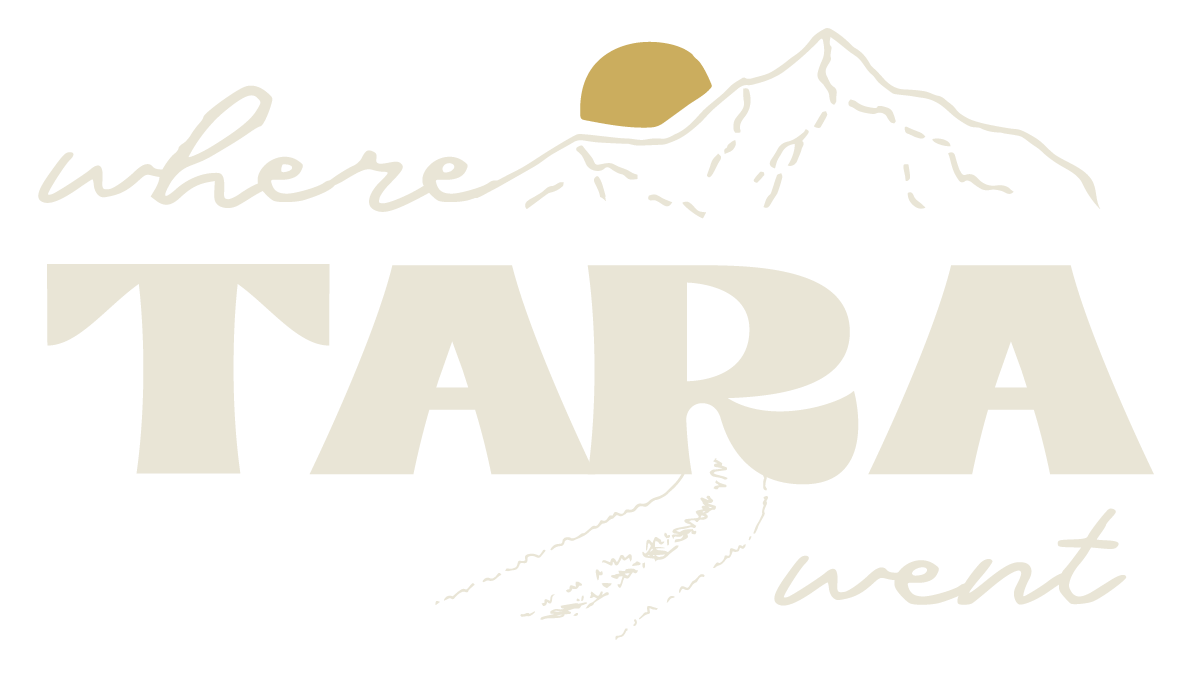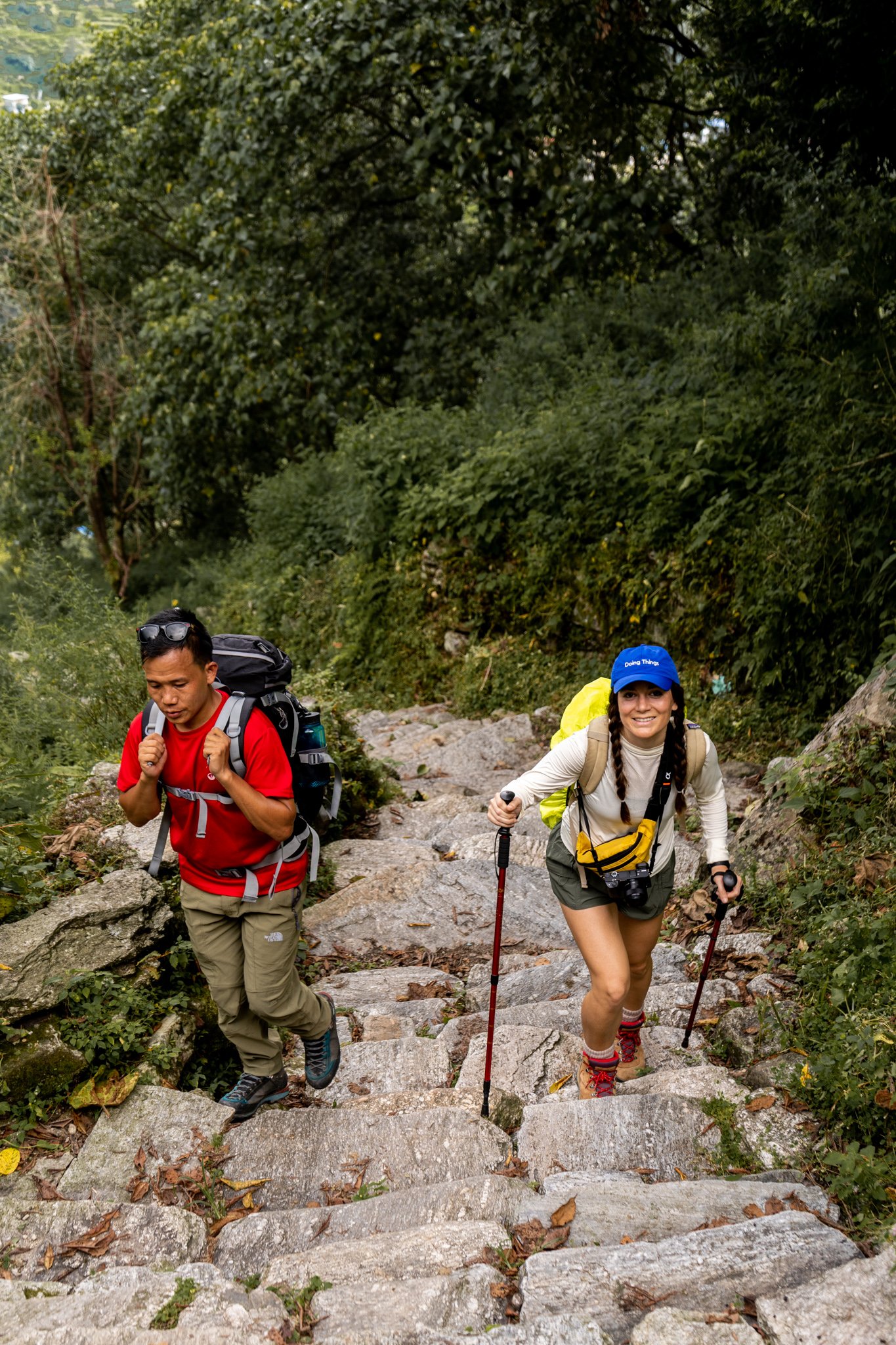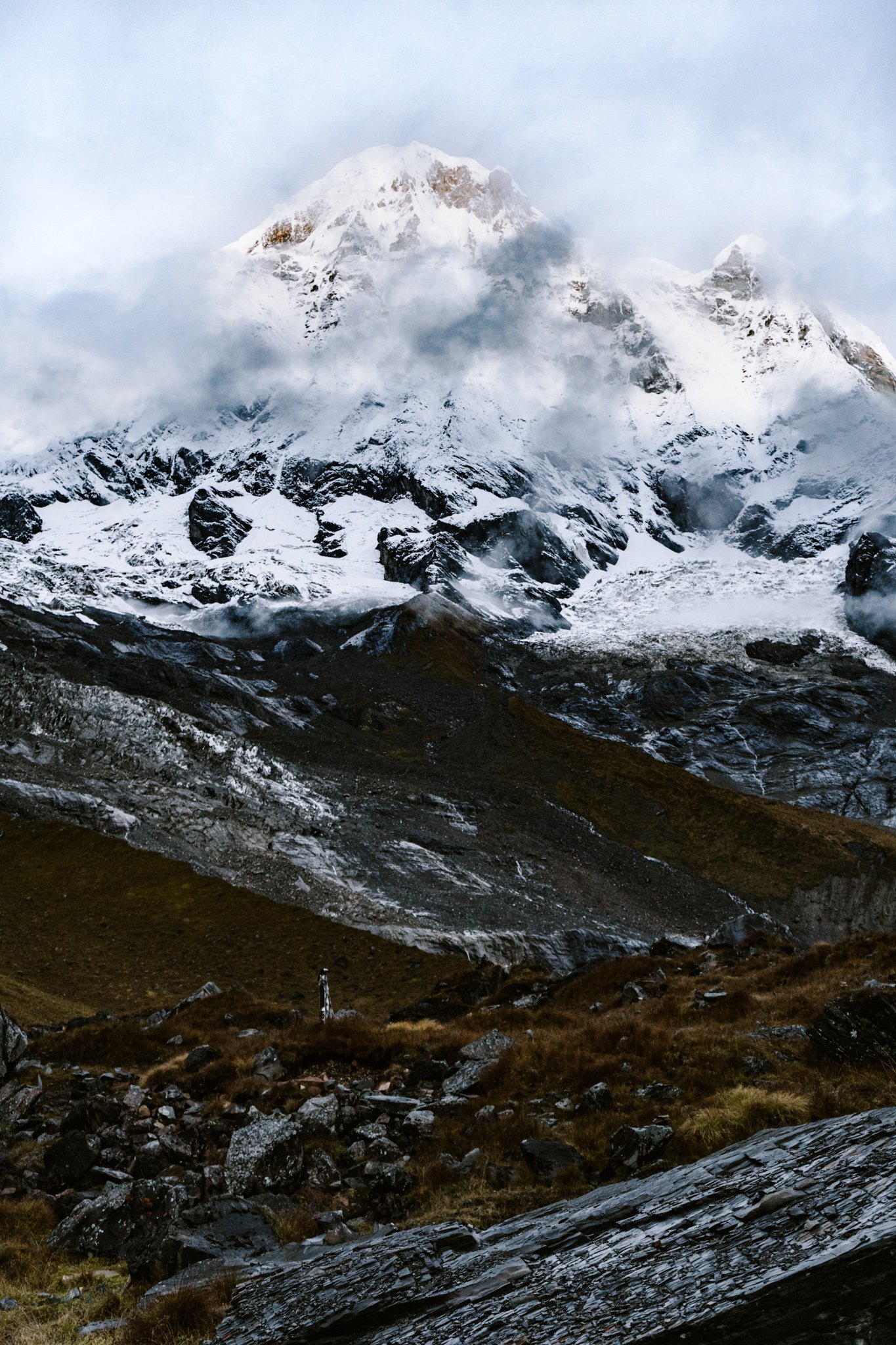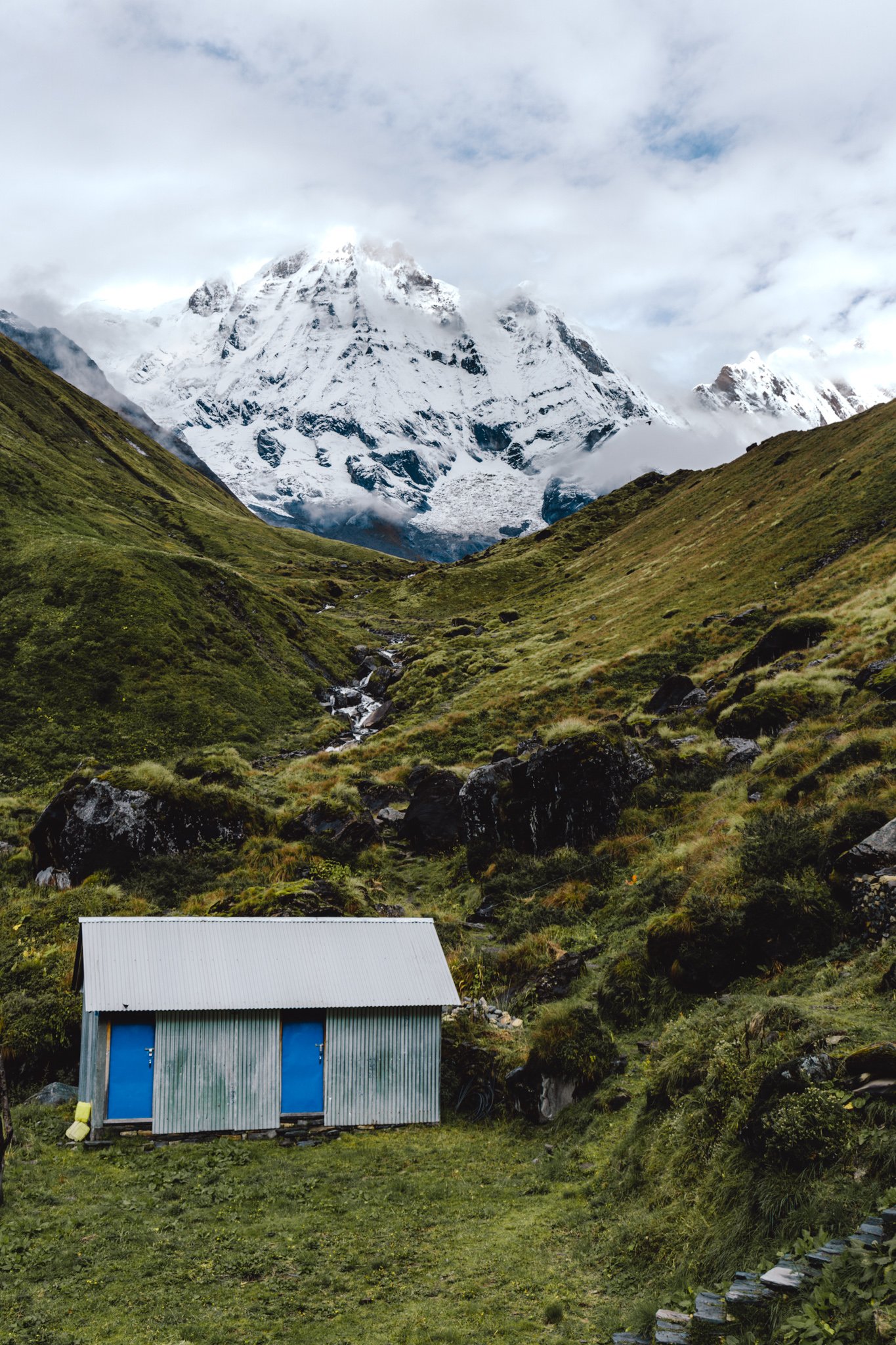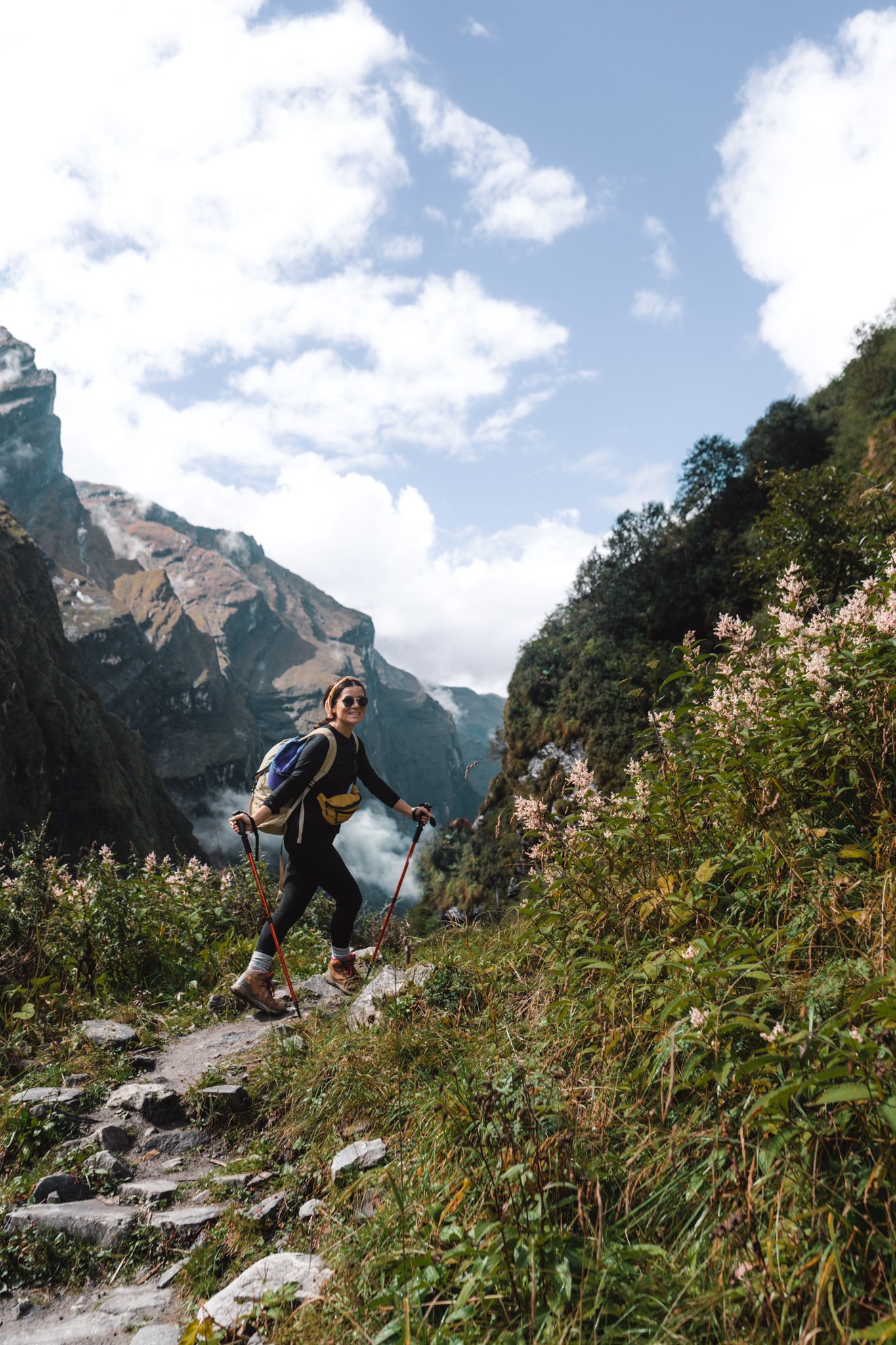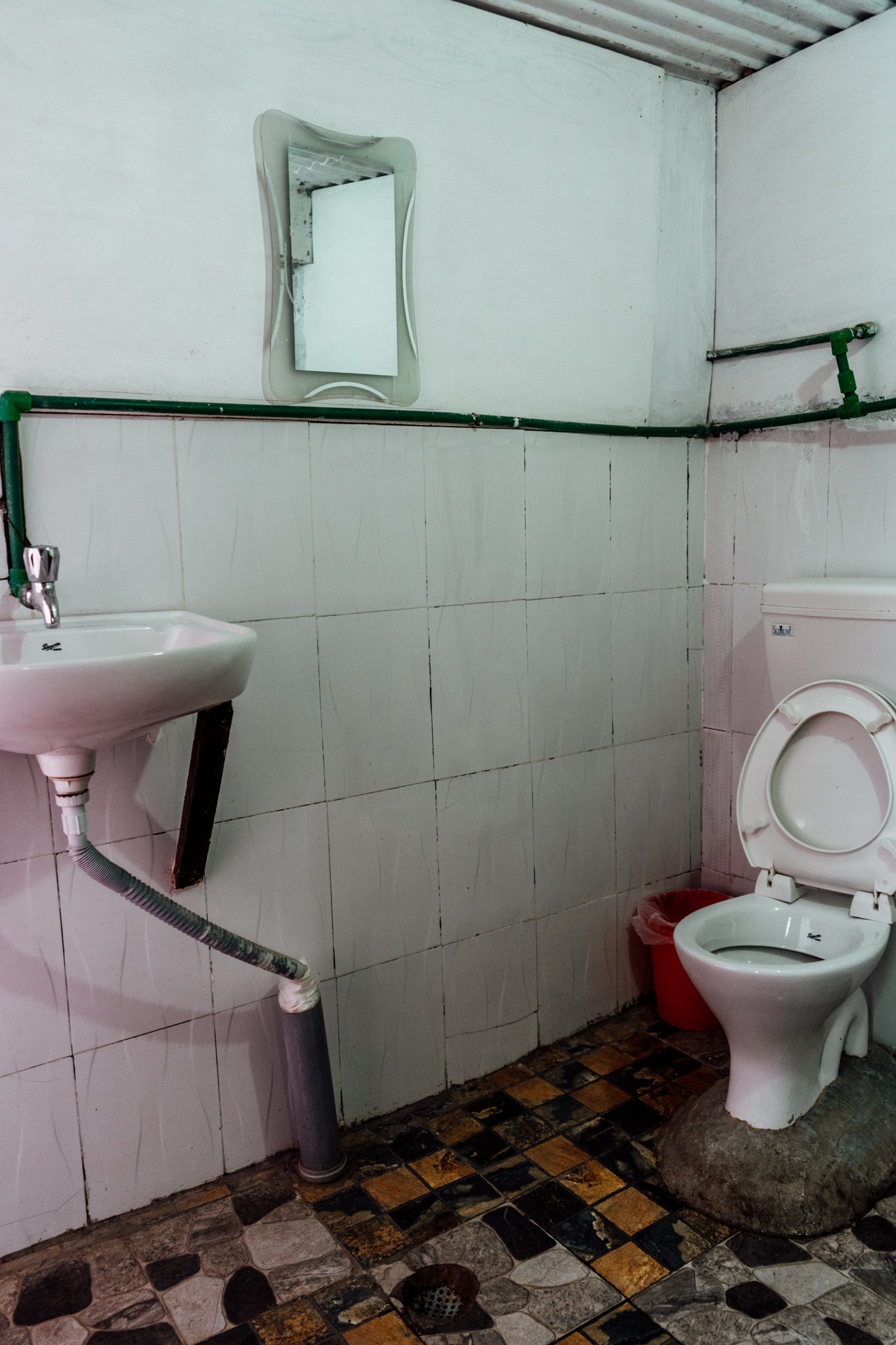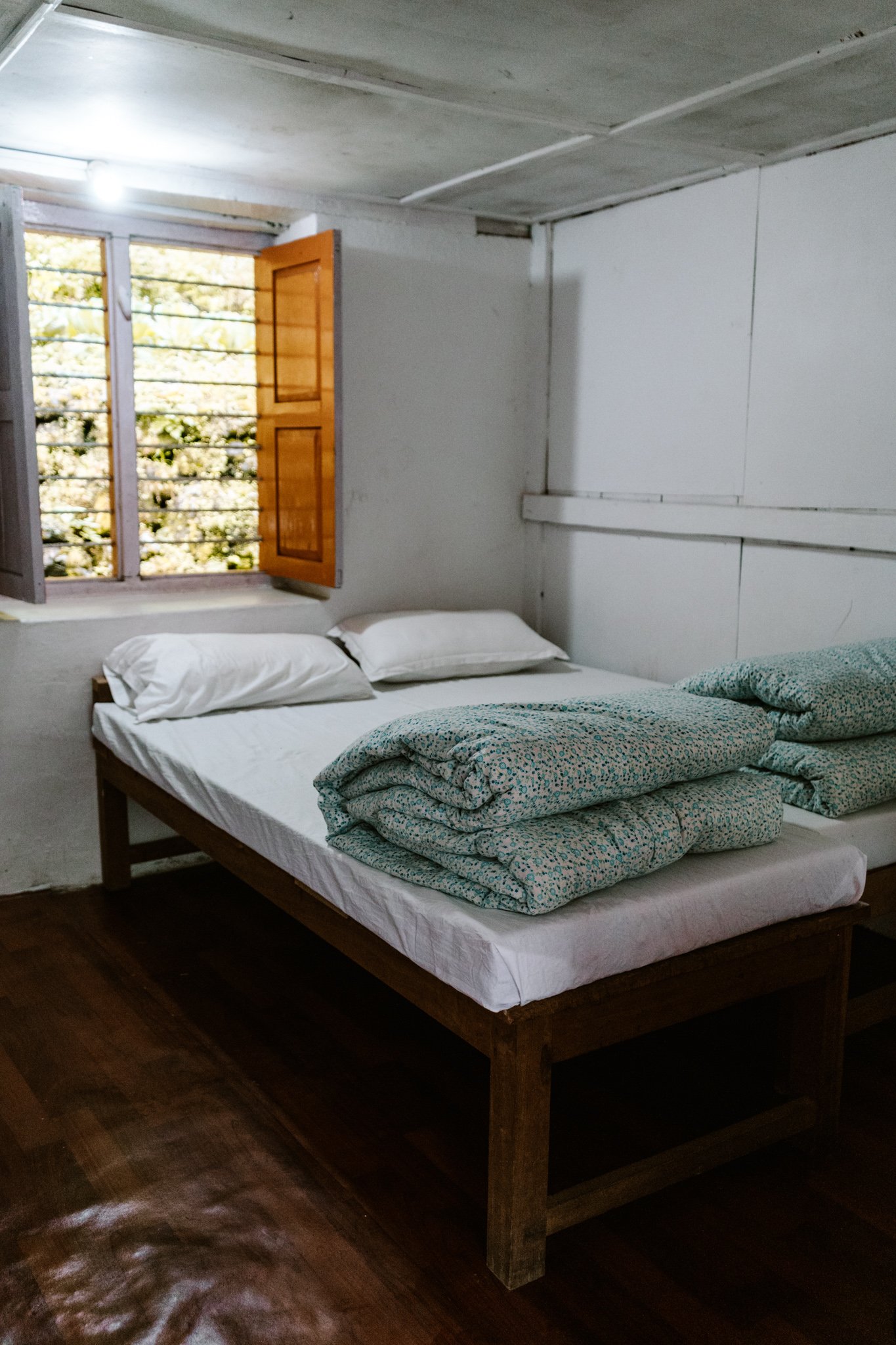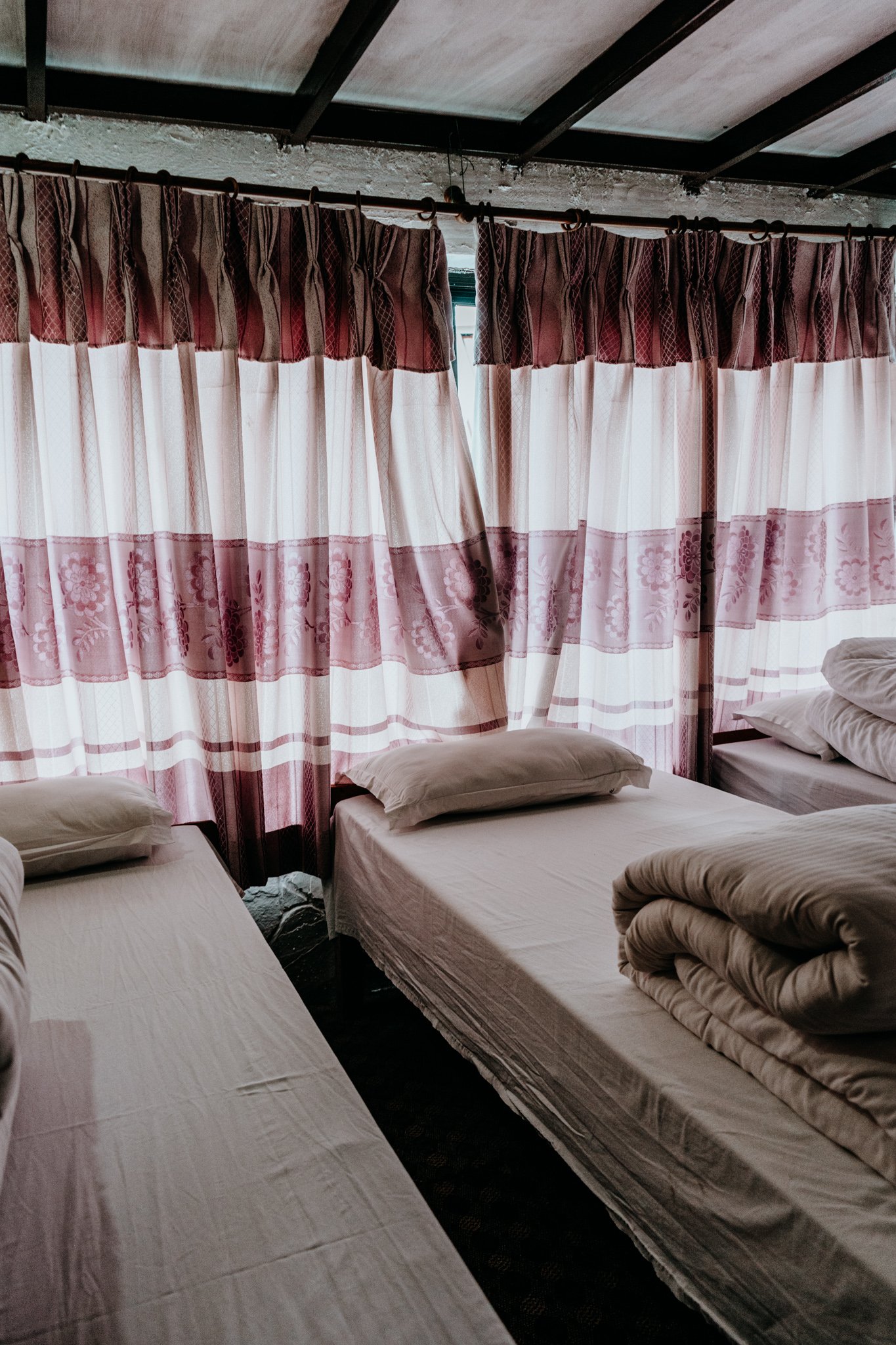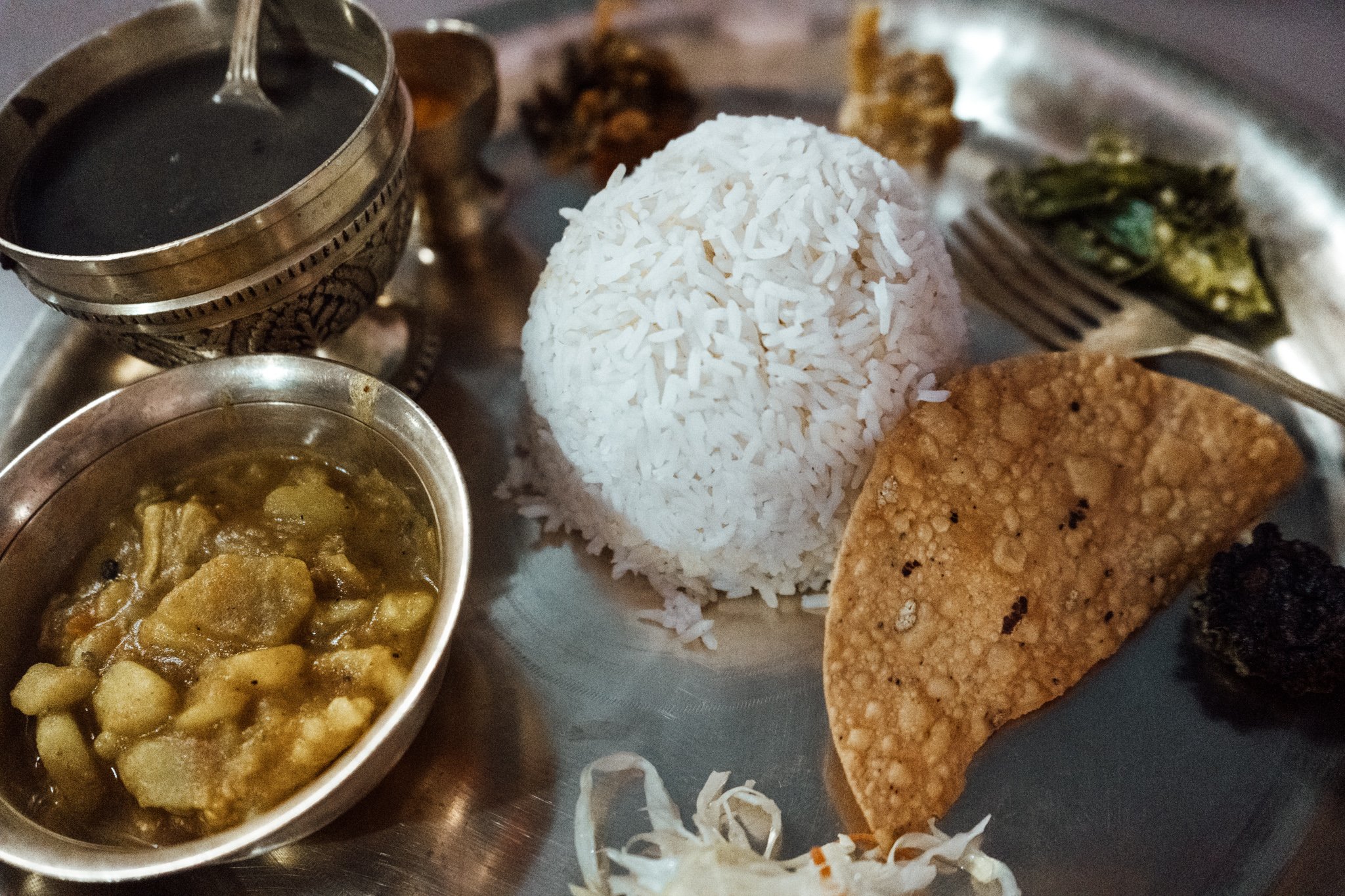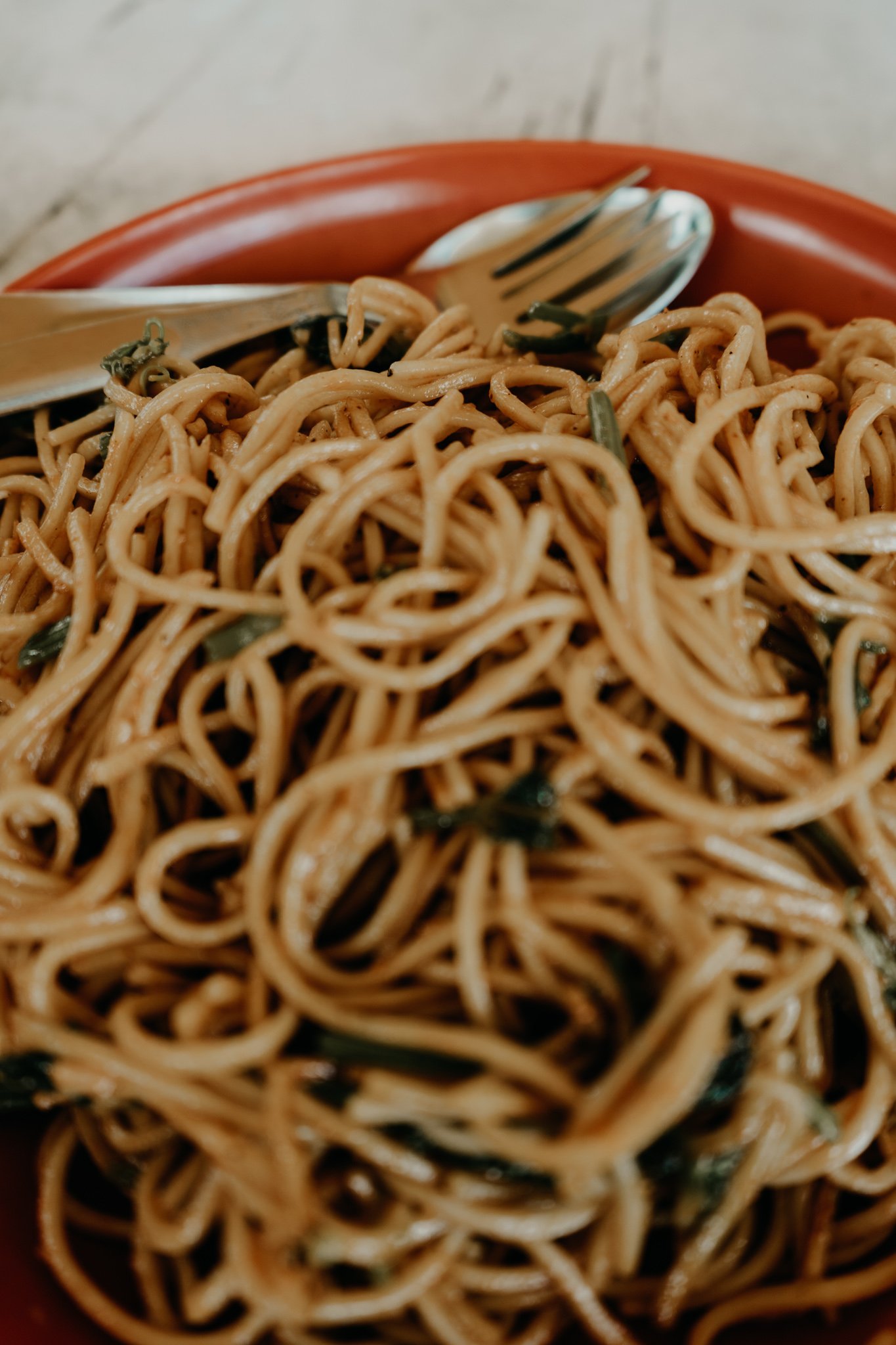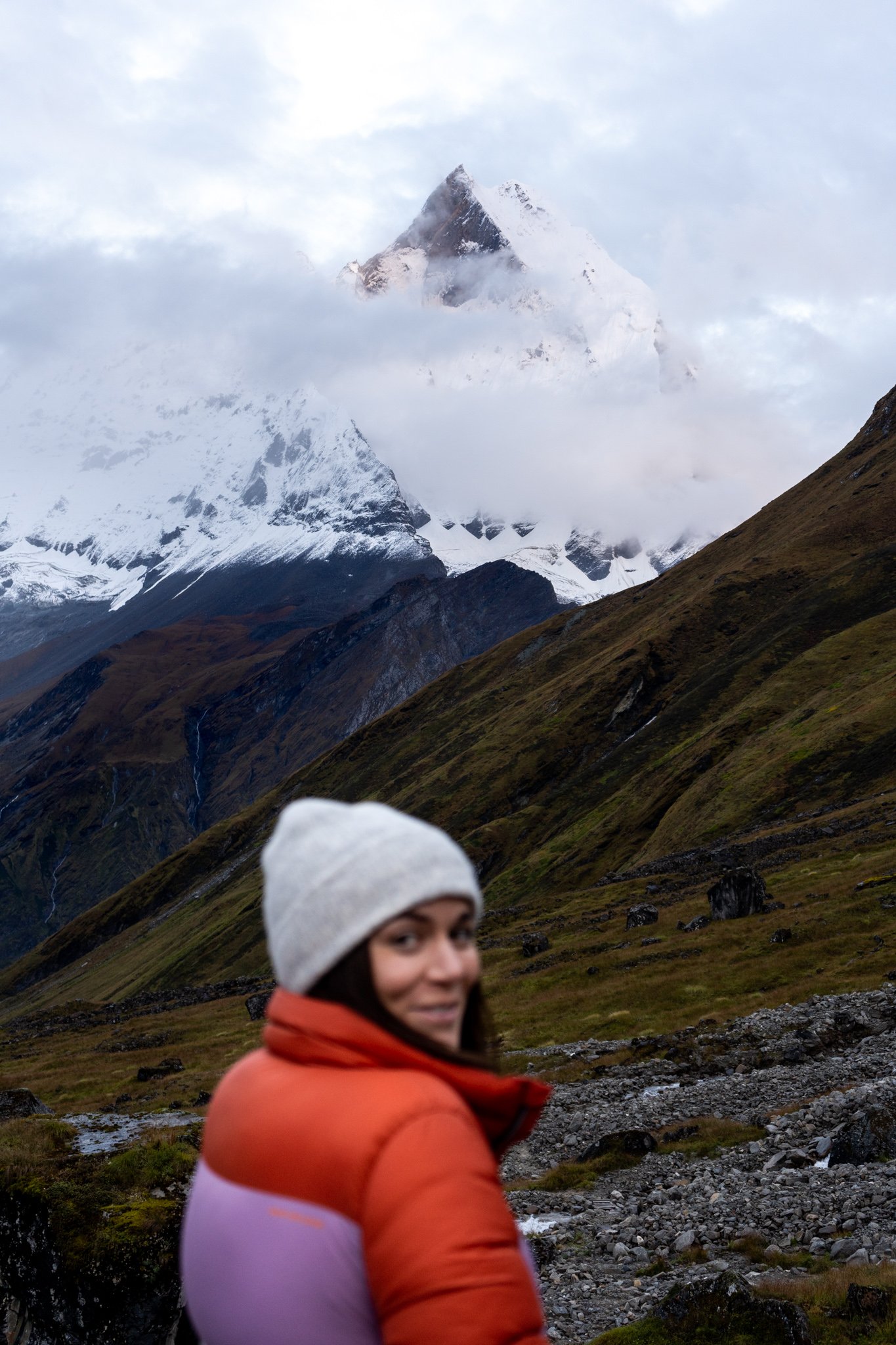Annapurna Base Camp Trek in Nepal: what to pack, when to trek, + how to prepare
Before you trek to Annapurna Base Camp in Nepal, read this guide for all the details about the trek, including budget breakdown, accommodation, booking a group trip, and packing information.
Scenic, challenging, and varied— Nepal’s Annapurna Base Camp trek is a trail that will change your life. This seriously stunning multiple-day trek passes through lush jungles, up steep stone steps, and crescendos at 4,130 meters elevation in perfect view of the Annapurna Range. But before you pull on your boots and hit the trailhead, you need to prepare yourself for the trek.
This isn’t any old hike! Landslides, altitude sickness, hiking permits, and changeable weather make thorough planning a necessity. Annapurna Base Camp is set amongst some of the biggest mountains in the world: Annapurna I (8091m), Annapurna South (7219m), and “Fishtail” Machapuchhre (6993m and 6997m). There is heaps to know, a decent amount of preparation and planning required, and a relatively important packing list, but it’s all worth it for the views.
Luckily, I’ve completed the trek and written this guide for hiking to Annapurna Base Camp to provide you with all the vital trek information, plus tips I’d wish I’d had!
quick ABC facts ↴
There are multiple starting points for the Annapurna Base Camp Trek. We began in Pokhara (this is the most popular starting point).
The highest point on the trek is the trek’s summit, Annapurna Base Camp (4130m).
It’s a moderately difficult hike that requires some level of fitness.
There are permits required for the trek. You’ll need to acquire a TIMS card – NPR 2000/US$17 and an Annapurna Sanctuary Permit – NPR 3000/US$25 per person. If you book your trek with a guide, this is included in the cost of your trek.
Teahouses provide food and accommodation to trekkers along the trail.
when to do the Annapurna base camp trek ↴
There are two main trekking seasons in Nepal: the spring (late March through early May), and the autumn (mid-September through early November). The spring is beautiful because the rhododendrons are in full bloom and the days are longer. The autumn is colder and the days are shorter, but you get much better clarity! November and December are perfectly good skies for trekking, and though it is colder, the trails are less busy than in the spring.
Annapurna Base Camp trek route ↴
Because we booked our trek with Intrepid Travel, we followed their set itinerary. This had us moving at a steady but comfortable pace up the mountain with a few longer days on the descent. The tour was 15 days long, but the trek itself took 11 days. Here is a breakdown of each hiking day.
Day 1: Bus from Pokhara to Nayapul where the hiking adventure begins! Hike from Nayapul to Ulleri
Day 2: Hike from Ulleri to Ghorepani
Day 3: Hike from Ghorepani to Tadapani
Day 4: Hike from Tadapani to Chomrong
Day 5: Hike from Chomrong to Doban (Dovan)
Day 6: Hike from Doban to Machhapuchre Base Camp (MBC)
Day 7: Hike from MBC to Annapurna Base Camp (ABC), where you will spend the entire day and night
Day 8: Spend the morning at ABC then begin your descent to Bamboo
Day 9: Hike from Bamboo to Jhinu Danda, the famous hot springs
Day 10: Hike from Jhinu Danda to Pothana
Day 11: Hike from Pothana to Phedi! You’ve completed the trek! You’ll be shuttled from Phedi back to the hotel in Pokhara.
should you book a tour or trek alone ↴
Technically speaking, you can absolutely trek to Annapurna Base Camp on your own. If you choose to go that route, you will be responsible for your trekking permit, carrying all your belongings, your own health and safety, navigating paths that are regularly changing due to landslides and avalanches, and finding teahouses and food along the entirety of your trek. It’s a lot to think about and requires a lot of preparation.
Alternatively, you can do what I did and book through a reputable trekking company. Luke and I highly recommend Intrepid Travel, the B Corp company we booked through.
Booking a group tour means all your permits are taken care of, your accommodation is already booked, porters are hired (the real MVPs), and you can focus on the hiking part of the trek. It also means you are providing jobs to local expert trekkers/porters who make a majority of their yearly income during the hiking season.
fitness for the trek to ABC ↴
The trek to Annapurna Base Camp is not a walk in the park. It’s not something you decide randomly to do on a Thursday night without any preparation— at least it shouldn’t be. Preparation is the key to a safe trek (for everyone) and will ultimately make the journey much more enjoyable.
I was going to gym classes six times per week, as well as walking up the seven flights of stairs to my London flat before we embarked on the trek. Do I think it requires this much physical preparation? No. Did it hurt? Absolutely not. In fact, I felt like the trek to ABC was relatively easy because my body was so incredibly prepared.
My overall recommendation is to get on the stair master! A large majority of the trail is made up of steep steps and stone-stair inclines. My trainer told me that I should imitate this movement (walking up steep steps) before the trek and I’m so happy I did, because my legs felt properly conditioned for every long day.
Fitness goes beyond physicality! It is imperative that you get your mind right before you head up the mountain because your positive thoughts will carry you long after your tired legs will. Our guides constantly reminded us that a positive mindset is what gets you to base camp. I saw a lot of people have minor breakdowns on the trek, especially on the rainy days when we were being attacked by jungle leeches (totally fair), which is why I kept asking everyone little questions to take their minds off of the trail ahead. The trek is honestly meditative if you let it be. Pick a mantra and say it over and over again in your head so that, before you know it, you’re magically at your destination.
what to pack for the Annapurna Base Camp trek ↴
FIRST AID KIT | Inclusive of antihistamines, band-aids (plasters/bandages), paracetamol (Tylenol), bug spray, Neosporin (or other antiseptic cream/spray), tweezers, nail clippers,
LONG SLEEVE SHIRTS | 2-3 quick-dry long-sleeve shirts
T-SHIRTS | 2-3 quick-dry t-shirts
HIKING PANTS + SHORTS | 2 pairs of hiking pants and 1-2 pairs of hiking shorts, though it’s even better if they’re hiking pants that zip off into shorts (simple is better on the trail)
RAIN JACKET | Waterproof and good quality
PUFFER JACKET | Evenings get really cold
DAYPACK | Proper fitting, 15-35 litres depending on how much you are carrying with you throughout the day
WATERPROOF COVERING FOR DAYPACK | You will likely encounter some kind of precipitation, so make sure your daypack has a waterproof covering to keep your belongings dry
CASH | There are no cashpoints/ATMs on the trail, so budget correctly and bring all the cash you will need with you (see below)
PASSPORT | keep on you at all times, just in case
HIKING POLES | Recommended for those who have knee pain on steep downhills
SLIDE ON SANDALS | For showers and evenings at the teahouses
SLEEPING BAG | Blankets are provided at teahouses, but they are not always washed in between guests and tend to be in relatively poor condition
HEADTORCH | For early-morning hiking (to Poon Hill) and for late-night trips to the toilet
MICROFIBER TOWEL | Check the size of your towel to make sure it’s big enough to dry you completely
BEANIE + GLOVES | For cool mornings
SUN PROTECTION | Cream, glasses, hat
SWEATPANTS/COMFIES | For at night at the teahouses you stop at along the way, you’ll want to be warm and comfy
TRAVEL LAUNDRY SOAP | You may have noticed I only listed a small number of shirts for the entire 11 days, but you’ll want to pack less (and your porters will thank you for it!) so bring a small thing of laundry soap to spot clean clothing as you go
TOILETRIES | a small pouch of basic toiletries, inclusive of shampoo, face wash, toothbrush, toothpaste,
SNACKS | There are plenty of shops along the way for you to buy snacks, and I encourage you to spread the wealth along the trail by purchasing bits as you go, but variety is slim and prices increase sharply the higher you go, so packing your favourite snacks before you go is a good idea (we brought vegan gummy candies and they were an absolute pick-me-up treat)
MENSTRUATION PRODUCTS | If you are a menstruating person and there is any chance you might start your period, bring products with you!! Pads are available scarcely on the trail and tampons are non-existent, so bring anything you might need.
accommodation on the Annapurna Base Camp trek ↴
Accommodation along the ABC trek is found in the form of teahouses, which are locally-owned guesthouses with attached dining facilities and basic rooms. We had read multiple blog posts preparing us for the absolute worst. Every article we read painted a very grim picture of what actually turned out to be clean rooms cared for by friendly and attentive staff. Were they basic? Yes, but I think people trekking for multiple days into remote areas where supplies needs to be either helicoptered in or carried in by a porter should probably manage their expectations a bit.
There is a charge at teahouses for nearly everything as you ascend further and further up the mountain. Charging, hot showers, space heaters, WiFi— it all comes at a (small) price. If these are amenities you expect, you’ll need to add a few dollars into your budget each day. Also, just because you pay for the WiFi doesn’t mean that it will be working. Everyone who paid for WiFi in our group seemed to find it was working properly at all of our teahouse accommodations, but this isn’t always the case.
Bathrooms were the biggest area of concern for a lot of people on our trek. Squat toilets are easily found at teahouses and restaurants along the trek. Western toilets are a little harder to find, but they are around. and toilet paper is almost never included so bring some tissue with you every toilet break. All the toilets I used were relatively clean, apart from the toilet at Annapurna Base Camp, which was quite smelly and a bit less clean than what we had encountered previous to it. The way I see it, you’re only in there for a matter of minutes and then you can wash your hands and gtfo. Bring hand sanitizer as some sinks aren’t accompanied by soap.
QUICK TIPS FOR ACCOMMODATION:
→ Bring a few key toiletries in a waterproof bag (be it a plastic bag or something fancier you’ve purchased) to keep your things dry while you shower, as the shower facilities tend to be “wet rooms” (ie. a small room with a toilet and shower in one space, rarely with a dry bench or hook).
→ Don’t forget to bring a sleeping bag or sleep sheet! During peak season, bedding rarely gets washed between guests and you don’t want bed bugs in the middle of a multi-day trek.
→ Ear plugs are a necessity for light sleepers, especially if you are sharing a dorm room with strangers whose sleeping habits you aren’t aware of.
→ A lock on your bag is a great idea! We didn’t experience any funny business, but we’ve heard stories of travellers leaving their bags in their dorm room and having cash go missing. There is no CCTV on the mountain, so carry your passport and cash on you at all times and keep a lock on your bag to be safe.
🛏️ learn more about accommodation on the trek 🛏️
food on the Annapurna Base Camp trek ↴
One of the biggest and best surprises of my Annapurna Base Camp trek was how fantastic the food was throughout the entire journey. Truly, the food along the trek was absolutely incredible.
→ FOOD BUDGETING
Food, like everything else on the trail, gets more expensive as you go up in elevation. This is because ingredients are harder to source in remote mountain villages. At the start of the trail, our total spend per meal (as a couple) was roughly USD $8. By the end of the trip, that nearly tripled. You order at the teahouses and pay in cash after you’ve finished your meal. Tipping after your meal is not necessary (or the norm), though I’m sure it would be appreciated.
→ MENU VARIETY + ETIQUETTE
Menus on the trail are approved and standardized by the local authorities. Prices on teahouse restaurant menus are set as part of this standardization to prevent any one teahouse from having a monopoly on the market. It is correct etiquette to have your meals from the teahouse you are staying at. Going out for a dinner at a different teahouse from where you are staying is seen as rude.
→ SERVICE
Because all the food on the trail is cooked fresh to order, service can be a bit slower. It’s a good idea to order right when you arrive at your teahouse, go shower and throw your things in your room, and then go to the dining hall to chow down. Be patient, smile, and go in knowing that with bigger groups there is a real challenge for small kitchens to cater to everyone quickly.
🍛 learn more about food on the trek 🥘
budgeting for the Annapurna base camp trek ↴
Your budget breakdown will depend on whether or not you have booked a tour or are trekking on your own.
We were told to budget for USD $30 per person, per day on the trek. However, our accurate expenditure was closer to half that. We’ve figured our lower spending is probably due to Luke not spending on teas or coffees (he doesn’t drink hot drinks), and the days when we split lunch (portions are heaping and I don’t normally eat lunch anyway). We also didn’t splurge on things like dessert or starters for our dinners (the meals themselves were enough). Others in our group spent much more than USD $30 per person per day and one girl was surviving off of a stricter budget of USD $10 per day. Ultimately, I agree with the USD $30 per person, per day budget guideline. If you spend less, great! If you spend within that budget, also great! You’ll be better off bringing more and not needing it than needing more and not having it.
There are no ATMs or cash points on the trail, so if you allow your budget a little wiggle room but spend smarter, you’ll finish the trail happily with a good chunk of money left over.
You will also need to factor tips into your budget. Your guide, assistant guides, and porters should all be tipped. This is technically optional. However, guides and porters only get their salary on days when they are on the trail. That means any time they aren’t actively trekking, they aren’t actually earning an income. With that in mind, tipping helps supplement the days when porters and guides aren’t helping get you and your belongings up and down the mountain safely.
